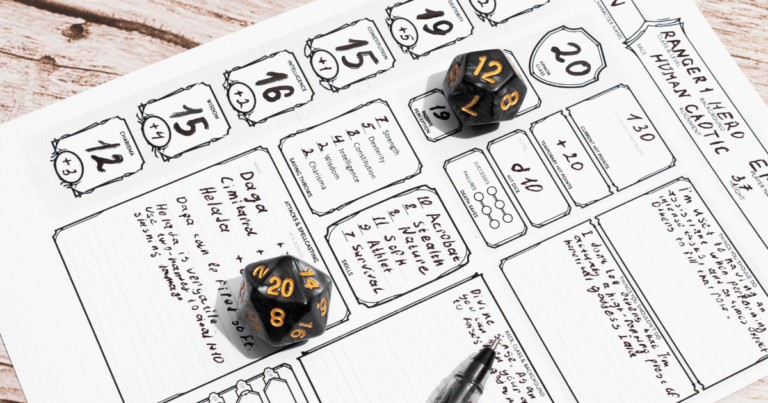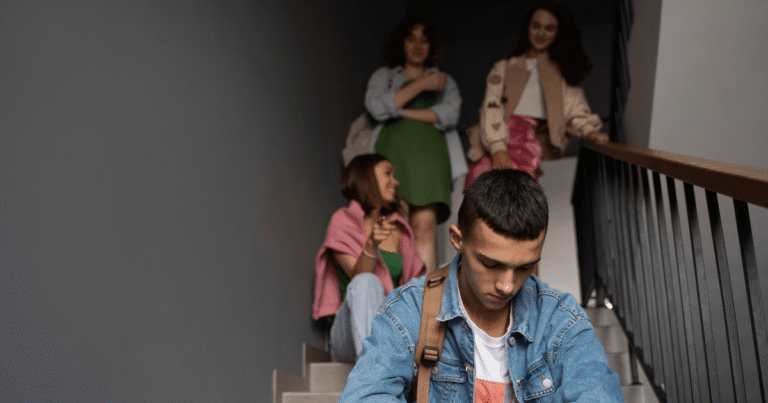Social Anxiety Disorder Treatment Plan: Complete CBT Protocol and Example (2025 Guide)
Learn how mental health professionals create effective treatment plans for social anxiety disorder, including real examples, CBT protocols, and measurable outcomes.
Understanding Social Anxiety Disorder Treatment Plans
A social anxiety disorder treatment plan is a comprehensive, individualized roadmap created by mental health professionals to guide therapy and track progress. Unlike generic anxiety management strategies, these plans are specifically tailored to address the unique symptoms, triggers, and goals of each person struggling with social anxiety.
Why treatment plans matter:
- Structured approach ensures all aspects of social anxiety are addressed
- Measurable goals allow both therapist and client to track progress
- Evidence-based interventions maximize the likelihood of successful treatment
- Clear timeline helps set realistic expectations for recovery
- Insurance documentation often required for coverage and reimbursement
Components of an Effective Social Anxiety Treatment Plan
1. Comprehensive Assessment and Diagnosis
- Detailed clinical interview covering symptom history and severity
- Standardized assessment tools like the Liebowitz Social Anxiety Scale (LSAS)
- Evaluation of functional impairment in work, relationships, and daily activities
- Assessment of comorbid conditions like depression or other anxiety disorders
2. Problem Identification and Symptom Mapping
- Cognitive symptoms: Fear of judgment, catastrophic thinking patterns
- Physiological symptoms: Racing heart, sweating, trembling, nausea
- Behavioral symptoms: Avoidance, safety behaviors, social withdrawal
- Functional impact: Career limitations, relationship difficulties, isolation
3. Goal Setting with Measurable Outcomes
- Long-term goals: Overall symptom reduction and improved functioning
- Short-term objectives: Specific, measurable steps toward larger goals
- Timeline: Realistic expectations for achieving each objective
- Success metrics: How progress will be measured and tracked
Real-World Treatment Plan Example: Mark’s Journey
Client Background and Presentation
Client Profile:
- Name: Mark (composite case for educational purposes)
- Age: 26 years old
- Occupation: Software Engineer
- Primary complaint: Work-related social anxiety preventing career advancement
Presenting Problems: Mark experiences intense anxiety in professional and social situations, particularly fearing judgment from colleagues and supervisors. His social anxiety has reached a crisis point where he declined a promotion requiring team leadership, fundamentally limiting his career trajectory.
Specific symptoms include:
- Workplace avoidance: Skipping team meetings, company events, and collaborative projects
- Safety behaviors: Over-rehearsing comments, avoiding eye contact, eating lunch alone
- Physical symptoms: Racing heart, sweating, and trembling when approached by supervisors
- Cognitive distortions: Believing colleagues view him as incompetent and awkward
- Functional impairment: Career stagnation and isolation from workplace relationships
Clinical Diagnosis and Assessment
DSM-5 Diagnosis: F40.10 Social Anxiety Disorder (Social Phobia)
Diagnostic criteria met:
- Marked fear of social situations where scrutiny by others is possible
- Fear of negative evaluation and judgment in work-related interactions
- Avoidance behaviors significantly impacting occupational functioning
- Symptoms persist for more than 6 months with substantial distress
- Functional impairment in professional and social domains
Assessment tools used:
- Liebowitz Social Anxiety Scale (LSAS): Initial score of 89 (severe social anxiety)
- Clinical interview: Comprehensive history of symptoms and functional impact
- Behavioral assessment: Direct observation of safety behaviors and avoidance patterns
Comprehensive Problem List and Treatment Targets
1. Cognitive Component (Thought Patterns)
Primary cognitive distortions:
- Fear of negative evaluation: “Everyone is watching and judging my performance”
- Mind reading: “My colleagues think I’m incompetent and awkward”
- Catastrophizing: “If I make a mistake, I’ll be fired and humiliated”
- All-or-nothing thinking: “Either I’m perfect or I’m a complete failure”
Treatment targets:
- Identify automatic negative thoughts in real-time
- Challenge evidence for catastrophic predictions
- Develop balanced, realistic thought patterns
- Build cognitive flexibility and self-compassion
2. Physiological Component (Physical Symptoms)
Primary physical symptoms:
- Cardiovascular: Rapid heart rate and palpitations
- Respiratory: Shortness of breath and shallow breathing
- Neurological: Trembling hands and muscle tension
- Dermatological: Excessive sweating and facial flushing
Treatment targets:
- Learn diaphragmatic breathing techniques
- Practice progressive muscle relaxation
- Develop body awareness and early warning signs
- Use relaxation skills for pre- and post-exposure management
3. Behavioral Component (Actions and Avoidance)
Avoidance behaviors:
- Meeting avoidance: Skipping team meetings and collaborative sessions
- Social withdrawal: Avoiding company events and informal interactions
- Performance avoidance: Declining presentations and leadership opportunities
- Physical avoidance: Eating lunch alone and avoiding common areas
Safety behaviors:
- Over-preparation: Excessive rehearsing of comments and responses
- Physical concealment: Gripping objects to hide trembling
- Eye contact avoidance: Looking away during conversations
- Verbal minimization: Speaking quietly or giving minimal responses
Treatment targets:
- Systematic exposure to feared social situations
- Elimination of safety behaviors during exposures
- Gradual increase in social engagement and participation
- Building confidence through successful social experiences
Detailed Treatment Goals and Measurable Objectives
Long-Term Goal 1: Symptom Reduction
Primary objective: Reduce overall social anxiety symptoms to subclinical levels within 16-20 weeks of treatment.
Specific short-term objectives:
Objective 1.1 – Cognitive Restructuring (Week 4): Client will demonstrate ability to identify and challenge 3-5 automatic negative thoughts daily using thought record technique with 80% accuracy.
Measurement: Weekly review of completed thought records with therapist assessment of accuracy and insight development.
Objective 1.2 – Distress Tolerance (Week 12): Client will report 50% reduction in Subjective Units of Distress (SUDS) ratings when entering previously feared situations.
Measurement: SUDS ratings (0-100 scale) recorded before, during, and after exposure exercises with weekly progress tracking.
Long-Term Goal 2: Functional Improvement
Primary objective: Significantly improve occupational and social functioning to enable career advancement and workplace relationships.
Specific short-term objectives:
Objective 2.1 – Meeting Participation (Week 8): Client will voluntarily contribute at least one comment or question during weekly team meetings.
Measurement: Self-report tracking of meeting participation with specific instances documented in therapy sessions.
Objective 2.2 – Social Engagement (Week 16): Client will attend at least one voluntary company social event and remain for minimum 30 minutes.
Measurement: Attendance verification and SUDS ratings before, during, and after social events.
Objective 2.3 – Safety Behavior Reduction (Week 14): Client will reduce use of safety behaviors (over-rehearsing, object gripping, eye contact avoidance) by 75% as measured by daily self-monitoring.
Measurement: Daily tracking sheets with weekly therapist review and behavioral observation during in-session role-plays.
Evidence-Based Treatment Interventions
Primary Modality: Cognitive Behavioral Therapy (CBT)
Session structure: 50-minute individual therapy sessions, weekly frequency Estimated duration: 16-20 sessions with progress reviews every 4-6 weeks Therapeutic approach: Manualized CBT protocol specifically designed for social anxiety disorder
Phase 1: Psychoeducation and Assessment (Sessions 1-3)
Educational components:
- CBT model explanation: How thoughts, feelings, and behaviors interact to maintain social anxiety
- Social anxiety disorder overview: Symptoms, prevalence, and treatability
- Treatment rationale: Why exposure therapy and cognitive restructuring are effective
- Collaboration building: Establishing therapeutic alliance and treatment motivation
Assessment activities:
- Comprehensive clinical interview covering symptom history and functional impact
- Behavioral observation of social anxiety symptoms during session
- Fear hierarchy development ranking social situations from least to most anxiety-provoking
- Baseline measurement using standardized assessment tools
Phase 2: Cognitive Restructuring (Sessions 4-8)
Core techniques:
Automatic Thought Identification:
- Learning to recognize negative thoughts in real-time
- Understanding the connection between thoughts and emotional responses
- Developing mindfulness skills for thought awareness
- Practice identifying cognitive distortions in daily situations
Thought Record Training:
- Situation: Identifying specific triggering events
- Emotion: Recognizing and rating emotional responses
- Automatic thoughts: Capturing exact thoughts and predictions
- Evidence examination: Looking for supporting and contradicting evidence
- Balanced thinking: Developing realistic, helpful alternative thoughts
Cognitive Distortion Challenges:
- Mind reading: “How do you know what others are thinking?”
- Catastrophizing: “What’s the worst that could realistically happen?”
- All-or-nothing thinking: “Is there a middle ground or gray area?”
- Fortune telling: “What evidence do you have for this prediction?”
Phase 3: Exposure and Response Prevention (Sessions 9-16)
Exposure hierarchy for Mark’s case:
Level 1 (SUDS 20-30) – Weeks 9-10:
- Making brief eye contact with colleagues in hallways
- Asking one work-related question during informal conversations
- Eating lunch in the office break room once per week
Level 2 (SUDS 40-50) – Weeks 11-12:
- Contributing one comment during team meetings
- Initiating casual conversation with a familiar colleague
- Attending brief office celebrations (15-20 minutes)
Level 3 (SUDS 60-70) – Weeks 13-14:
- Leading a 5-minute portion of a team meeting
- Attending full-length company social events
- Expressing disagreement or alternative viewpoint in meetings
Level 4 (SUDS 80-90) – Weeks 15-16:
- Giving a 10-15 minute presentation to team
- Networking at industry events or conferences
- Applying for leadership positions requiring social interaction
Exposure guidelines:
- No safety behaviors: Client must resist urges to use coping strategies during exposures
- Prolonged exposure: Remain in situation until anxiety naturally decreases by 50%
- Repeated practice: Multiple exposures to each situation for habituation
- Processing sessions: Detailed discussion of exposure outcomes and learning
Phase 4: Skill Consolidation and Relapse Prevention (Sessions 17-20)
Maintenance strategies:
- Continued exposure practice: Regular engagement in previously feared situations
- Cognitive skill maintenance: Ongoing use of thought challenging techniques
- Lifestyle integration: Incorporating social activities into regular routine
- Warning sign recognition: Identifying early indicators of social anxiety relapse
Relapse prevention planning:
- High-risk situations: Identifying circumstances that might trigger symptom return
- Coping strategies: Specific plans for managing future social anxiety challenges
- Support systems: Building networks for ongoing encouragement and accountability
- Booster sessions: Scheduling follow-up appointments as needed
Supplementary Interventions and Techniques
Relaxation Skills Training
Diaphragmatic breathing technique:
- 4-7-8 pattern: Inhale for 4 counts, hold for 7, exhale for 8
- Belly breathing: Focus on expanding abdomen rather than chest
- Practice schedule: 10-15 minutes daily, plus before challenging situations
- Application: Use before and after (not during) exposure exercises
Progressive muscle relaxation:
- Systematic tensing and releasing of muscle groups
- Body awareness training to recognize physical tension
- Stress reduction for overall anxiety management
- Sleep improvement for anxiety-related insomnia
Behavioral Experiments
Testing catastrophic predictions:
Experiment 1 – Visible Anxiety:
- Prediction: “If people see my hands shake, they’ll think I’m incompetent”
- Experiment: Intentionally allow hands to shake during conversation
- Outcome measurement: Actual responses from colleagues
- Learning: Reality testing of feared consequences
Experiment 2 – Imperfect Performance:
- Prediction: “If I stumble over words, everyone will judge me”
- Experiment: Deliberately make minor verbal mistakes during meetings
- Outcome measurement: Colleague reactions and professional consequences
- Learning: Understanding tolerance for human imperfection
Mindfulness and Acceptance Techniques
Present-moment awareness:
- Mindful observation of anxious thoughts without judgment
- Acceptance of uncomfortable emotions rather than avoidance
- Values clarification to motivate behavioral changes
- Committed action toward meaningful goals despite anxiety
Progress Measurement and Monitoring
Standardized Assessment Tools
Liebowitz Social Anxiety Scale (LSAS):
- Administration schedule: Intake, mid-treatment (week 8), and termination
- Score interpretation:
- 55-65: Moderate social anxiety
- 65-80: Marked social anxiety
- 80-95: Severe social anxiety
- Above 95: Very severe social anxiety
- Target outcome: Reduction to below 55 (subclinical range)
Social Phobia Inventory (SPIN):
- Weekly administration for detailed progress tracking
- Subscale analysis: Fear, avoidance, and physiological symptoms
- Treatment response: 50% reduction indicates significant improvement
Session-by-Session Monitoring
Subjective Units of Distress (SUDS):
- 0-100 scale rating anxiety intensity
- Pre-exposure baseline: Anxiety level before challenging situations
- Peak anxiety: Highest distress during exposure
- Post-exposure: Anxiety level after habituation
- Progress indicator: Decreasing peak anxiety and faster recovery
Homework completion tracking:
- Thought records: Number completed and quality of insights
- Exposure exercises: Completion rate and SUDS recordings
- Behavioral experiments: Implementation and outcome documentation
- Skill practice: Frequency of relaxation and mindfulness exercises
Functional Outcome Measures
Work Performance Indicators:
- Meeting participation: Frequency and quality of contributions
- Social engagement: Attendance at workplace events and interactions
- Career advancement: Willingness to pursue leadership opportunities
- Productivity: Overall work performance and job satisfaction
Quality of Life Assessment:
- Social relationships: Number and quality of workplace friendships
- Life satisfaction: Overall happiness and fulfillment ratings
- Avoidance behaviors: Reduction in social and professional avoidance
- Confidence levels: Self-efficacy in social and performance situations
Treatment Timeline and Milestones
Weeks 1-4: Foundation Building
- Primary focus: Assessment, education, and cognitive skill development
- Key milestones:
- Complete comprehensive assessment
- Develop accurate case formulation
- Master thought identification and challenging techniques
- Establish therapeutic alliance and treatment motivation
Expected outcomes:
- 80% accuracy in identifying automatic negative thoughts
- Basic understanding of CBT model and social anxiety mechanisms
- Completed fear hierarchy with SUDS ratings
- Increased hope and motivation for change
Weeks 5-8: Cognitive Restructuring Mastery
- Primary focus: Advanced cognitive techniques and preparation for exposure
- Key milestones:
- Demonstrate skilled use of thought records
- Show evidence of more balanced thinking patterns
- Complete low-level behavioral experiments
- Reduce cognitive symptoms by 25-30%
Expected outcomes:
- Daily thought record completion with minimal prompting
- Spontaneous challenging of catastrophic thoughts
- Decreased worry and anticipatory anxiety
- Increased willingness to engage in exposure exercises
Weeks 9-12: Initial Exposure Phase
- Primary focus: Systematic exposure to low-moderate anxiety situations
- Key milestones:
- Complete Level 1 and 2 exposure exercises
- Demonstrate ability to resist safety behaviors
- Show habituation during prolonged exposures
- Report 30-40% reduction in avoidance behaviors
Expected outcomes:
- SUDS ratings decrease from baseline during exposures
- Increased frequency of voluntary social interactions
- Greater comfort with workplace conversations
- Building confidence through successful experiences
Weeks 13-16: Advanced Exposure and Integration
- Primary focus: High-anxiety exposures and real-world application
- Key milestones:
- Complete Level 3 and 4 exposure exercises
- Demonstrate leadership in team meetings
- Attend full company social events
- Achieve 50% reduction in overall LSAS scores
Expected outcomes:
- Voluntary participation in previously avoided situations
- Elimination of most safety behaviors
- Significant improvement in work performance ratings
- Increased social connections and workplace relationships
Weeks 17-20: Consolidation and Prevention
- Primary focus: Maintenance planning and relapse prevention
- Key milestones:
- Develop comprehensive relapse prevention plan
- Schedule ongoing exposure maintenance activities
- Achieve subclinical LSAS scores (below 55)
- Demonstrate independent anxiety management skills
Expected outcomes:
- Sustainable behavioral changes in social situations
- Confidence in handling future social challenges
- Integrated use of cognitive and behavioral skills
- Long-term maintenance of treatment gains
Common Challenges and Treatment Adaptations
Addressing Treatment Resistance
Motivational challenges:
- Ambivalence about change: Some clients fear losing their “edge” or becoming “too social”
- Secondary gains: Social anxiety may serve protective functions that need addressing
- Perfectionism: Fear that treatment won’t make them “perfect” in social situations
Therapeutic strategies:
- Motivational interviewing techniques to explore ambivalence
- Values clarification to connect treatment goals with personal meaning
- Realistic expectations about treatment outcomes and ongoing anxiety management
Managing Comorbid Conditions
Depression and social anxiety:
- Integrated treatment addressing both mood and anxiety symptoms
- Activity scheduling to increase pleasant and mastery experiences
- Behavioral activation before intensive exposure work when needed
Substance use complications:
- Assessment of self-medication patterns with alcohol or drugs
- Coordinated care with addiction specialists when indicated
- Modified exposure protocols ensuring safety during early recovery
Cultural and Individual Adaptations
Cultural considerations:
- Eye contact norms varying across cultural backgrounds
- Social hierarchy awareness in different cultural contexts
- Family dynamics and cultural expectations around social behavior
- Language barriers that may complicate social interactions
Individual differences:
- Introversion vs. social anxiety: Distinguishing personality traits from disorder symptoms
- Autism spectrum considerations: Modified social skills training when indicated
- Learning disabilities: Adapted cognitive techniques for different learning styles
- Age-related factors: Developmental considerations for adolescent or older adult clients
Insurance and Documentation Requirements
Treatment Plan Documentation
Required elements for insurance coverage:
- Medical necessity: Clear justification for CBT treatment
- Functional impairment: Specific examples of how social anxiety affects daily life
- Treatment goals: Measurable objectives with realistic timelines
- Progress monitoring: Regular assessment of symptom improvement
- Treatment modifications: Documentation of plan adjustments based on progress
Progress note requirements:
- Session content: Summary of interventions used in each session
- Client response: Engagement level and homework completion
- Progress toward goals: Specific evidence of improvement or challenges
- Risk assessment: Ongoing evaluation of safety and stability
- Plan modifications: Changes made based on treatment response
Authorization and Approval Processes
Initial authorization:
- Prior authorization: Many insurance plans require approval before starting therapy
- Assessment documentation: Comprehensive evaluation supporting treatment need
- Treatment plan submission: Detailed plan with goals and expected duration
- Provider credentials: Verification of therapist qualifications and specializations
Ongoing authorization:
- Progress reports: Regular updates demonstrating treatment effectiveness
- Continued medical necessity: Justification for ongoing therapy sessions
- Treatment plan updates: Modifications based on client progress and needs
- Outcome documentation: Evidence of improvement and functional gains
Outcome Expectations and Success Rates
Evidence-Based Effectiveness
Research-supported outcomes:
- 70-80% of clients show significant improvement with CBT for social anxiety
- 50-60% achieve full remission of social anxiety disorder symptoms
- Maintenance of gains: 80% maintain improvement at 12-month follow-up
- Functional improvement: Significant enhancement in work and social functioning
Factors predicting success:
- Treatment engagement: Regular attendance and homework completion
- Therapeutic alliance: Strong relationship with therapist
- Motivation for change: Clear goals and willingness to face fears
- Social support: Family and friend encouragement during treatment
Realistic Timeline Expectations
Short-term improvements (4-8 weeks):
- Increased understanding of social anxiety and its treatment
- Basic cognitive restructuring skills and thought challenging ability
- Reduced anticipatory anxiety through psychoeducation
- Improved hope and motivation for change
Moderate improvements (8-12 weeks):
- Noticeable reduction in avoidance behaviors
- Increased participation in previously feared situations
- Development of effective coping strategies
- Enhanced self-confidence in social interactions
Significant improvements (12-20 weeks):
- Substantial reduction in social anxiety symptoms
- Return to normal social and occupational functioning
- Elimination of most safety behaviors and avoidance patterns
- Sustained engagement in meaningful social activities
Long-Term Maintenance and Follow-Up
Maintenance Strategies
Ongoing exposure practice:
- Regular social challenges: Continuously engaging in situations that previously caused anxiety
- Skill refreshers: Periodic review of cognitive restructuring techniques
- Social goal setting: Establishing new social objectives to maintain progress
- Lifestyle integration: Making social engagement a natural part of daily routine
Support system development:
- Social networks: Building and maintaining meaningful relationships
- Professional connections: Networking and career development activities
- Community involvement: Participating in clubs, organizations, or volunteer work
- Family education: Helping loved ones understand and support recovery
Relapse Prevention Planning
Warning sign recognition:
- Early indicators: Identifying subtle signs of social anxiety return
- Trigger situations: Recognizing high-risk circumstances for symptom recurrence
- Stress monitoring: Understanding how general stress affects social anxiety
- Lifestyle factors: Sleep, exercise, and self-care impact on anxiety levels
Intervention strategies:
- Immediate coping: Quick techniques for managing acute anxiety episodes
- Cognitive tools: Refresher use of thought challenging and realistic thinking
- Behavioral strategies: Return to exposure exercises when avoidance increases
- Professional support: Knowing when to schedule booster therapy sessions
Conclusion: Your Path to Social Freedom
A comprehensive social anxiety disorder treatment plan provides the roadmap from isolation and fear to confidence and connection. Mark’s example demonstrates how structured, evidence-based treatment can transform limiting beliefs and avoidance behaviors into social competence and professional success.
Key takeaways for treatment success:
Collaboration is essential: The most effective treatment plans are developed through partnership between client and therapist, with regular adjustments based on progress and challenges.
Measurement matters: Clear goals and consistent progress monitoring ensure that treatment stays on track and modifications are made when needed.
Evidence-based approaches work: CBT techniques, particularly exposure therapy and cognitive restructuring, have decades of research supporting their effectiveness for social anxiety.
Recovery is possible: With proper treatment planning and consistent effort, the vast majority of people with social anxiety disorder can achieve significant symptom reduction and improved quality of life.
Maintenance is ongoing: Long-term success requires continued practice of treatment skills and ongoing engagement in social situations.
If you recognize yourself in Mark’s story or see similar patterns in your own social anxiety, remember that effective treatment is available. A qualified mental health professional can create a personalized treatment plan that addresses your specific symptoms, goals, and circumstances.
The journey from social anxiety to social confidence begins with a single step: reaching out for professional help. With the right treatment plan and your commitment to change, the social freedom and professional success you desire are entirely achievable.
Important Disclaimer: This treatment plan example is for educational purposes only and represents a composite case based on common clinical presentations. Real treatment plans must be developed by qualified mental health professionals in collaboration with individual clients and tailored to their specific needs, history, and circumstances.
Keywords: social anxiety disorder treatment plan, CBT for social anxiety, social anxiety therapy plan, exposure therapy protocol, cognitive behavioral therapy plan, social phobia treatment, anxiety treatment goals, social anxiety CBT example







